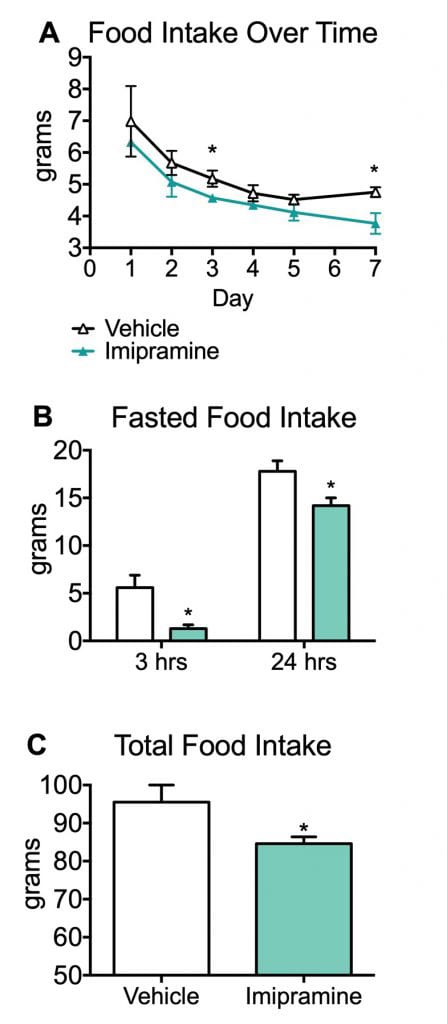Food Intake
Discover how Melior’s unique phenotypic screening platforms can uncover the untapped value of your candidate therapeutic
Food intake and the pattern of food intake over time is a useful means for determining the appetite suppressive effects of pharmacological agents in a number of contexts.
Antidepressants, specifically those that inhibit monoamine reuptake, have recently been found to be effective agents in reducing feeding behavior in mice and in the clinic.
Also, when examining candidate anti-obesity therapeutics it is usually important to understand whether any weight loss effects (or lack of weight gain effects) are the result of reduced food intake or some other cause. Finally, food intake can be a simple component to an overall assessment of an animals well being as poor tolerability to a test article will usually present itself as a reduction in food intake.
The study summarized below illustrates the use of food intake for examining the appetite suppressant effects of imipramine, a non-selective monoamine reuptake inhibitor antidepressant.
Ready to get started or looking for a custom model?
Contact us today for more information about our bespoke research models and to discuss how we can help you answer your unique research questions.
The study was conducted in CD-1 male mice (n=6). The graphs illustrate the appetite suppressant effects of imipramine across multiple days. Relative to imipramine, vehicle treated mice consumed more food daily (graph A) and cumulatively across multiple days (graph B). Additionally, during fasting/refeeding procedure, imipramine maintained an appetite suppressant effect as illustrated in graph C where vehicle treated animals consumed significantly more food both 3 and 24 hours after being food deprived. Data are mean ± SEM; *p<0.05 compared to vehicle.
Food intake studies can be run in an acute mode (over a single day after single administration of test article), over several days, or incorporated into longer chronic studies, which may last one or more months. They can be performed in both rats and mice.




